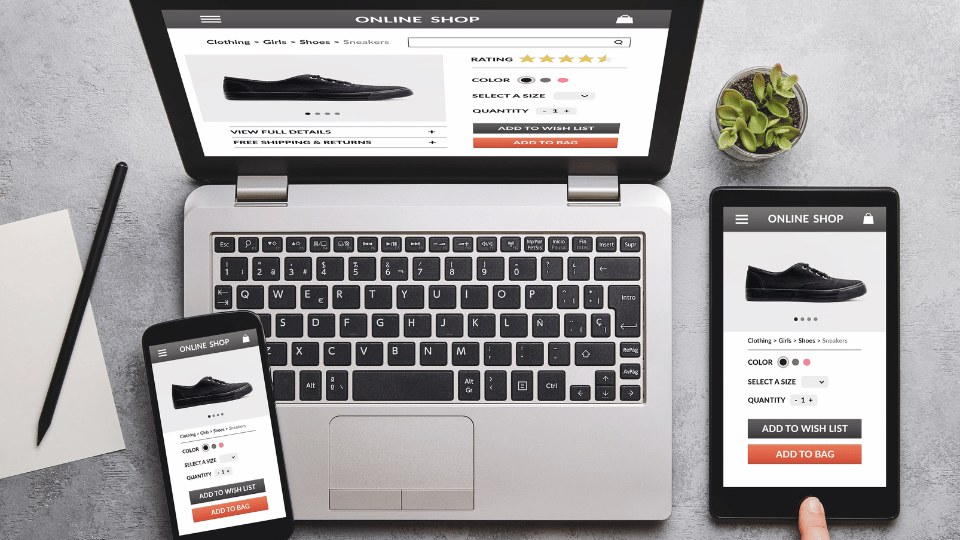In the fast-paced world of e-commerce, having a well-designed website is crucial for attracting customers and driving sales. Your website serves as the digital storefront for your business, making it essential to create a seamless and visually appealing online experience for visitors.
To help you navigate the complexities of e-commerce website design, we’ve compiled a comprehensive guide on the best practices to elevate your online brand and maximize your business potential.
User-Centric Design
One of the fundamental principles of e-commerce website design is putting the user first. Your website should be intuitive to navigate, with clear calls-to-action and easy access to product categories. Implement a user-friendly search function and filters to help visitors find what they’re looking for quickly. Prioritize mobile responsiveness to ensure a seamless experience across all devices.
Clear Brand Messaging
Effective communication is key to capturing the attention of your target audience. Craft clear and compelling brand messaging that conveys your unique value proposition and resonates with your customers. Use concise language and engaging visuals to communicate your brand story and product offerings effectively.
Visual Consistency
Consistency in visual elements such as color schemes, typography, and imagery is essential for establishing brand recognition and credibility. Create a cohesive visual identity that aligns with your brand values and resonates with your target audience. Use high-quality images and graphics to enhance the overall aesthetic appeal of your website.
Streamlined Checkout Process
A seamless checkout process is critical for reducing cart abandonment rates and improving conversion rates. Simplify the checkout steps, minimize form fields, and offer guest checkout options to streamline the purchasing journey for customers. Display trust badges and secure payment options to instill confidence in visitors and encourage them to complete their purchase.
Product Showcase
Your product pages should be visually engaging and informative to entice customers to make a purchase. Use high-resolution images, detailed product descriptions, and customer reviews to provide a comprehensive overview of your products. Implement product recommendation features to cross-sell and upsell related items, enhancing the shopping experience for customers.
Search Engine Optimization (SEO)
Optimizing your website for search engines is crucial for driving organic traffic and improving visibility in search results. Conduct keyword research to identify relevant terms and phrases that your target audience is searching for. Optimize meta tags, headings, and product descriptions with targeted keywords to improve your website’s search engine rankings.
Responsive Design
With the increasing use of mobile devices for online shopping, having a responsive design is non-negotiable. Ensure that your website is optimized for various screen sizes and devices to provide a seamless browsing experience for mobile users. Test your website across different devices and browsers to identify and address any usability issues.
Performance Optimization
Page speed and performance are critical factors that impact user experience and search engine rankings. Optimize your website’s loading speed by compressing images, minifying code, and leveraging caching mechanisms. Monitor performance metrics regularly and make necessary adjustments to ensure fast and reliable website performance.
Social Proof and Trust Signals
Building trust with your customers is essential for driving conversions and fostering brand loyalty. Display customer testimonials, ratings, and reviews prominently on your website to showcase social proof. Include trust signals such as secure payment icons, SSL certificates, and return policies to reassure visitors of the credibility and reliability of your brand.
Continuous Testing and Optimization
E-commerce website design is an ongoing process that requires constant testing and optimization. Use A/B testing to experiment with different design elements, layouts, and calls-to-action to determine what resonates best with your audience. Analyze user behavior, conversion rates, and other key metrics to identify areas for improvement and implement data-driven changes.
Conclusion
By implementing these best practices in your e-commerce website design, you can create a visually appealing, user-friendly, and conversion-focused online platform that drives engagement and boosts sales.
Key Takeaways:
- A well-designed website is essential for attracting customers and increasing sales.
- Prioritize user-friendly design with easy navigation, clear calls-to-action, and mobile responsiveness.
- Communicate your brand clearly through concise messaging and engaging visuals.
- Maintain visual consistency to strengthen brand recognition and credibility.
- Simplify the checkout process to reduce friction and increase conversions.
- Present products with high-quality images, detailed descriptions, and reviews to boost interest and trust.
- Optimize your site for search engines to drive more organic traffic.
- Ensure responsive design so the site works well on all devices and screen sizes.
- Improve site speed and performance for better user experience and SEO.
- Use social proof and trust signals to build credibility and encourage purchases.
- Continuously test and refine design elements based on user behavior and data to maximize results.
Implementing user-centric design, clear brand messaging, visual consistency, streamlined checkout processes, engaging product showcases, SEO optimization, responsive design, performance optimization, social proof integration, and continuous testing can enhance your e-commerce website’s success.
For further mastery of e-commerce strategies, consider enrolling in the Parsons Ecommerce Foundations online course and certificate program by Yellowbrick.



